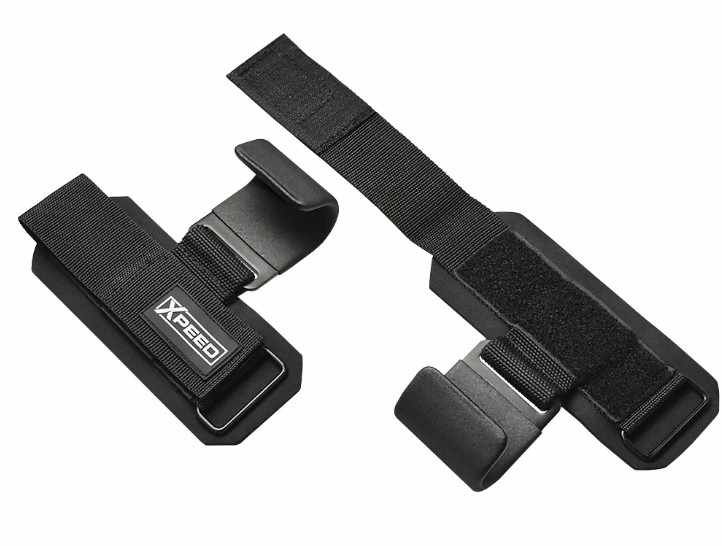
Strength training and weightlifting demand proper equipment to ensure both safety and performance. One such essential accessory is lifting hooks, designed to enhance grip strength and reduce strain on the hands. Whether you are a beginner or an advanced lifter, choosing the right hooks can make a significant difference in your workout efficiency. Investing in the best Lifting Hooks Gym can help you lift heavier weights while maintaining a firm grip.
Understanding Lifting Hooks
Lifting hooks are specialized gym accessories that assist in gripping weights, reducing hand fatigue, and preventing grip failure. They are commonly used for exercises such as deadlifts, shrugs, and pull-ups. Unlike lifting straps, which require wrapping around the wrist and bar, lifting hooks feature a hook mechanism that secures the weight effortlessly.
Benefits of Using Lifting Hooks
Enhanced Grip Strength: Helps maintain a strong hold on weights without over-relying on hand strength.
Reduced Hand Fatigue: Lessens strain on fingers and palms, allowing for longer workout sessions.
Improved Performance: Assists in lifting heavier weights, leading to greater muscle gains.
Better Wrist Support: Provides stability and minimizes wrist strain during intense exercises.
Selecting the right lifting hooks involves considering various factors, including design, material, and comfort.
1. Material and Durability
Lifting hooks are made from different materials such as steel, nylon, and neoprene. Steel hooks are highly durable and can support heavy weights, while neoprene padding ensures comfort.
2. Hook Design
The shape and size of the hook play a crucial role in determining grip efficiency. Look for hooks with a secure curve that easily wraps around the barbell or dumbbell for a firm hold.
3. Adjustable Straps
Well-designed lifting hooks come with adjustable straps that provide a customizable fit. Ensure that the straps are made of high-quality Velcro or heavy-duty fasteners to prevent slipping.
4. Comfort and Fit
Comfort is key when choosing lifting hooks. Opt for models with padded wrist support to prevent discomfort during prolonged use. A snug fit ensures better control and reduces the risk of injuries.
5. Weight Capacity
Different lifting hooks are designed to handle varying weight capacities. If you lift heavy, choose hooks that can support at least 300 lbs or more. For more info Click Here.
Types of Lifting Hooks
There are various types of lifting hooks available, each suited for different training needs.
Single Hook Lifting Hooks
These are the most common types, featuring a single curved hook that easily attaches to barbells and dumbbells. They are ideal for general weightlifting.
Double Hook Lifting Hooks
Designed for extra security, double hook models provide additional grip strength, reducing the chance of slipping during lifts.
Heavy-Duty Lifting Hooks
Built for powerlifters and advanced athletes, these hooks are reinforced with strong materials and padded wrist straps for maximum support.
Neoprene-Padded Lifting Hooks
These hooks come with additional padding to provide extra comfort, making them perfect for those who experience wrist discomfort.
Best Exercises to Perform with Lifting Hooks
Lifting hooks can be used in a variety of exercises to enhance grip support and overall strength training.
Deadlifts
One of the most common exercises where lifting hooks are beneficial. They help maintain grip on heavy barbells, allowing for better form and execution.
Pull-Ups and Chin-Ups
Using lifting hooks for pull-ups can reduce strain on the fingers and allow for more repetitions without compromising grip strength.
Barbell Rows
When performing barbell rows, lifting hooks help stabilize the weight, ensuring a controlled and effective back workout.
Shrugs
For building trap muscles, shrugs require a strong grip. Lifting hooks allow you to focus more on the movement rather than holding onto the weight.
Maintenance and Care Tips
To ensure longevity and maximum efficiency, proper maintenance of lifting hooks is necessary.
Regular Cleaning: Wipe down the hooks and straps with a damp cloth after each use to prevent sweat buildup.
Check for Wear and Tear: Inspect hooks and straps for any signs of damage or fraying and replace them if necessary.
Store Properly: Keep them in a dry and cool place to prevent rust or material degradation.
Choosing the right lifting hooks can significantly enhance your gym routine by improving grip strength, reducing hand fatigue, and allowing you to lift heavier weights with confidence. By considering factors such as material, design, comfort, and weight capacity, you can find the perfect lifting hooks tailored to your needs. Prioritize quality and durability to ensure maximum performance and safety during workouts.


Write a comment ...